
The all-around excellence of Amazon’s new 10-part thriller Homecoming has been covered already on The Ringer; not since that show about mean rich guys (I think it’s called Succession? Can anyone help me with this?) has an original series gotten so many Twitter-verified writers so excited. Fortunately, the hype is justified, at least on a level of pure craft. The Ringer’s Alison Herman correctly describes Esmail’s aesthetic as “heavily stylized, filled with split screens, overhead shots, and a constant accompaniment in an intricately composed composite of nail-biting scores,” to which I would only add—in case there’s any ambiguity—that this kind of audiovisual ingenuity is very much a Good Thing. Even in a year when directors like Atlanta’s Hiro Murai have already demonstrated serious chops in the TV format—and even without the knowledge that Esmail is trying to find a way to visualize material that began in podcast form—the Mr. Robot helmer’s bravura showmanship is worth celebrating. So how about doing it with some of the same detail-oriented focus that the show has itself? I thought you’d never ask.
The first shot of Homecoming’s pilot is also the first opportunity for Esmail and his team to play a game of spot the reference. As the camera tracks back from the aquarium in therapist Heidi Bergman’s office, Pino Donaggio’s satirically overwrought score from Dressed to Kill plays in the background. The obvious in-joke is that Brian De Palma’s 1980 thriller hinges on a plot twist involving a psychiatrist with a secret, and the shot’s slow, elegant movement copies De Palma’s style.
As the camera locks into place and Heidi prepares to deliver the first line of the show, the blinds on either side of her create a frame within a frame whose dimensions mirror the 1:1 aspect ratio used in the flash-forward scenes. Even within the reality of the show’s 2018 timeline, Heidi occupies a narrowed position, suggesting a lack of knowledge despite her authoritative position behind her desk. More importantly, the show’s visual signature has been established almost subliminally.
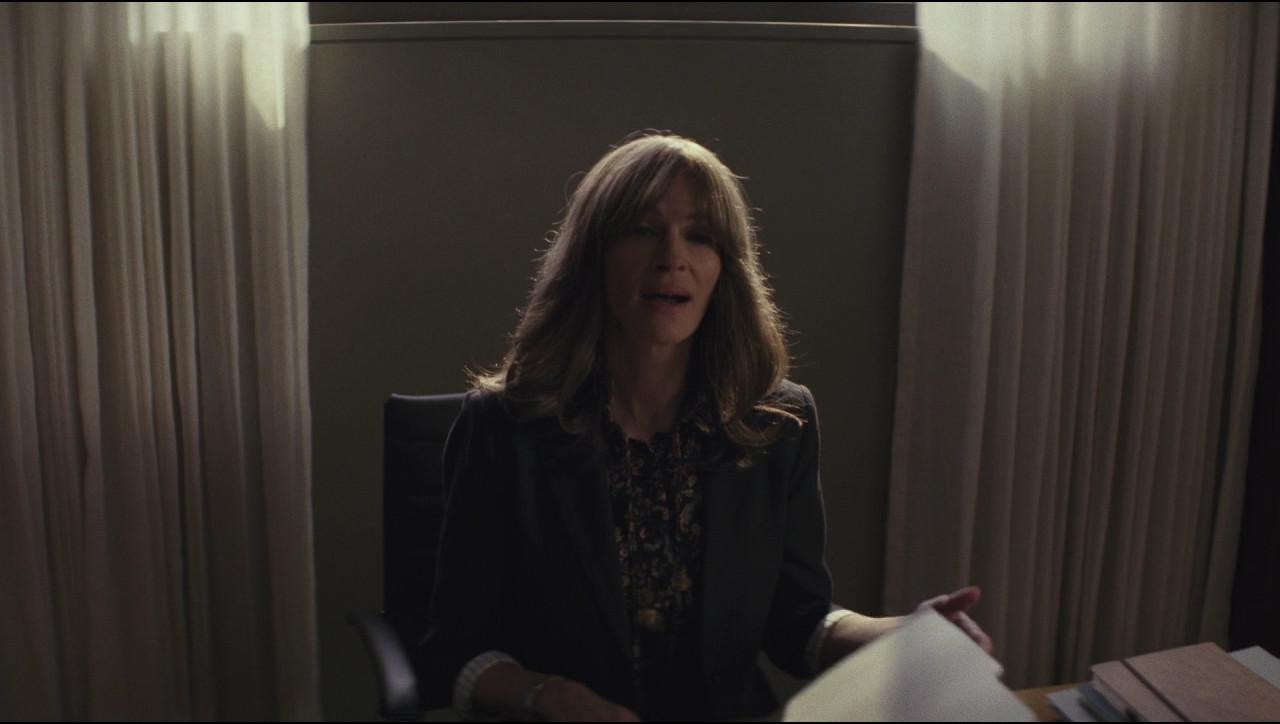
On Esmail’s television show Mr. Robot—which he has directed every episode of since the beginning of the second season—he uses canted, eccentric angles to accentuate a sense of sci-fi paranoia. Mr. Robot’s cinematography is stylized to a fault. In Homecoming, Esmail’s visual arsenal is a little more refined, but he still flexes his directorial muscles through the use of recurring motifs. One of the most striking—and beautiful—of these is his use of overhead shots to establish or reconfigure screen space. At least once per episode, the camera takes a hovering, predatory position, turning the locations—a doctor’s office, an outdoor fountain, a high-tech rec room—into semi-abstract canvases.
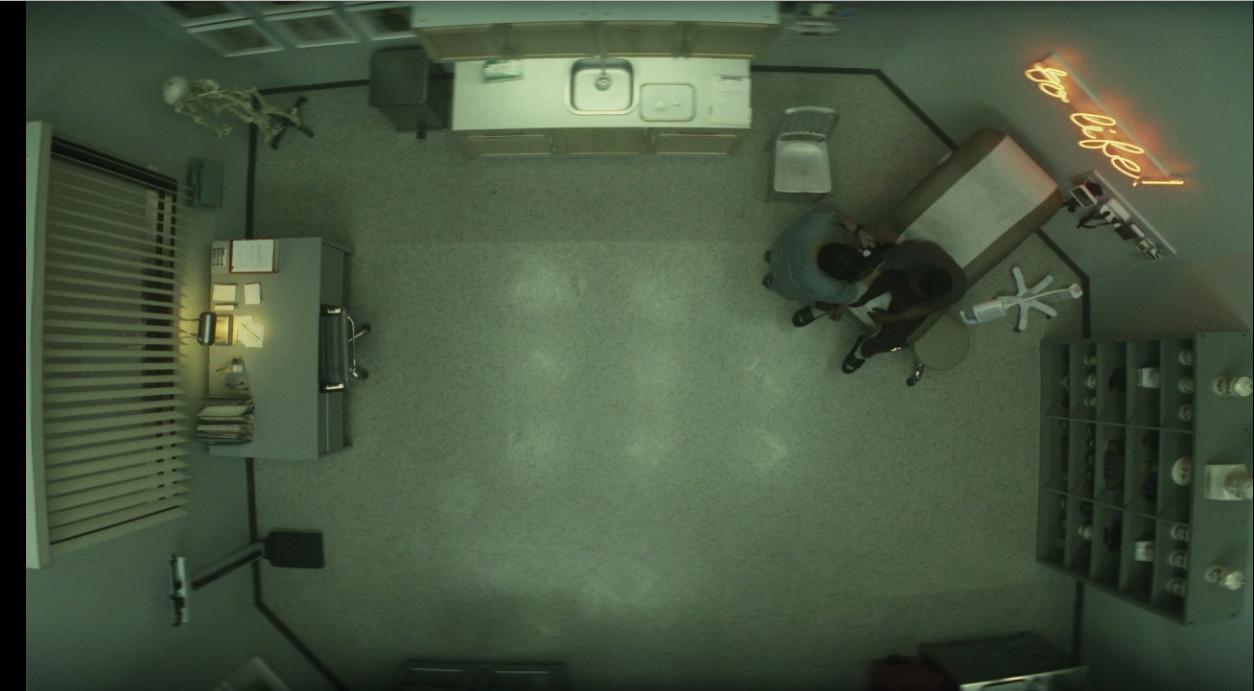
On a thematic level, these top-down compositions indicate that there’s always a more observational perspective available than what the characters can see—in effect, the shots align us with the oppressive power structure that serves as the show’s unseen villain.
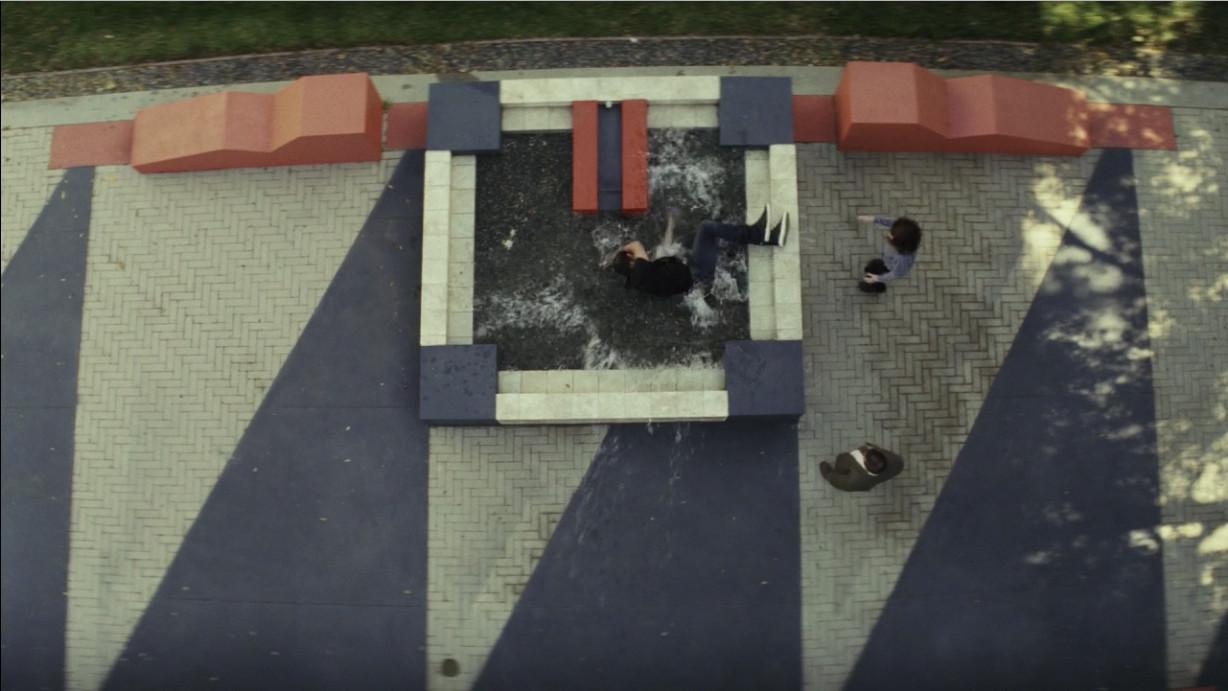
It’s also a 1970s paranoid cinema citation: The images evoke the great moment in All the President’s Men when Gordon Willis’s camera turns the Library of Congress Reading Room into a swirling mandala, reducing its crusading journalist heroes to tiny dots, as it ascends into the ceiling.
Of all the 1970s American classics I detected in Homecoming’s DNA, Alan Pakula’s fact-based thriller has the most palpable presence, with multiple allusions throughout the series.

David Fincher was also in love with All the President’s Men. His 2007 masterpiece Zodiac riffed freely on its fleet, mobile camera movement and David Shire’s mournful music cues. Imitation is the sincerest form of flattery, and Homecoming cozies up to Pakula-via-Fincher in a pair of cute homages to Zodiac. The first is an overhead shot of a van being driven by two soldiers who are momentarily on the run from the Homecoming facility (nodding to Fincher’s amazing set piece zeroing in on a cab carrying the Zodiac killer). The second is a parody of Zodiac’s already-playful vision of a mail cart carrying a mysterious letter into the offices of the San Francisco Chronicle.
In both cases, Esmail shows imitative reverence for Fincher’s master craftsmanship, and yet both shots also work within the narrative and thematic boundaries of his show.
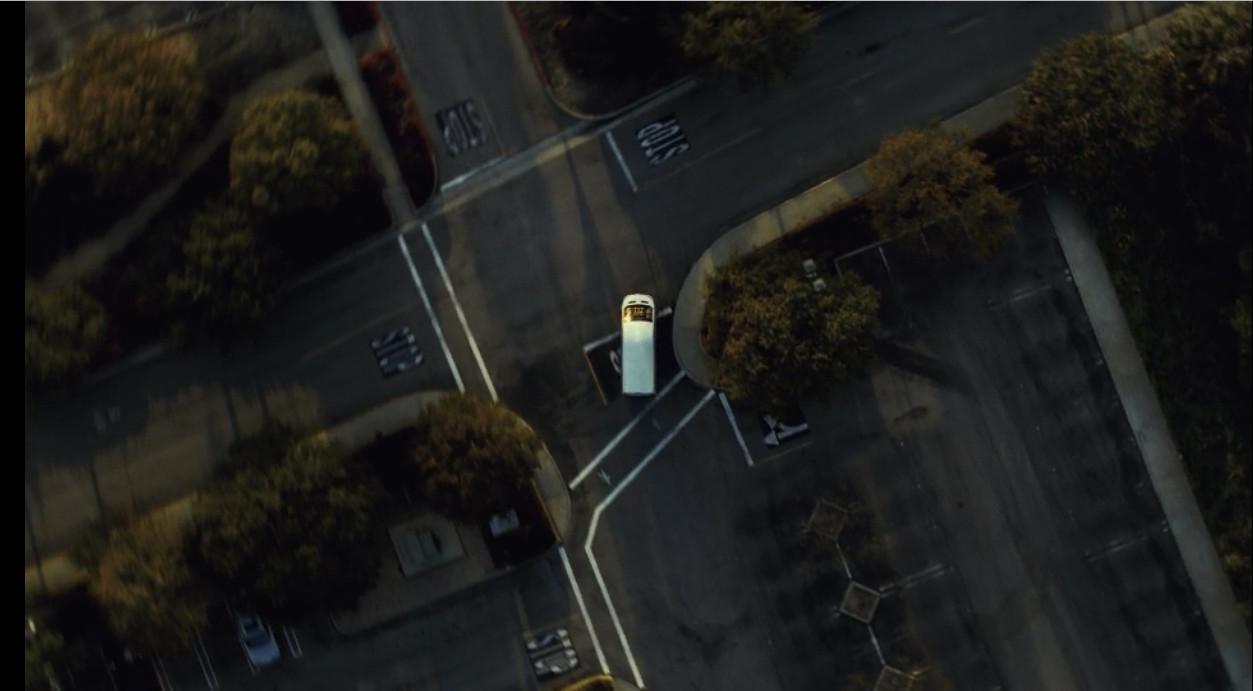
The escape by van introduces the viewer to the desolate, middle-of-nowhere geography surrounding Homecoming’s base of operations, while the mail-cart scene visualizes the delivery not of a poison-pen letter by a serial killer but a far-flung medicinal ingredient whose significance (and threat) will become apparent in subsequent episodes.
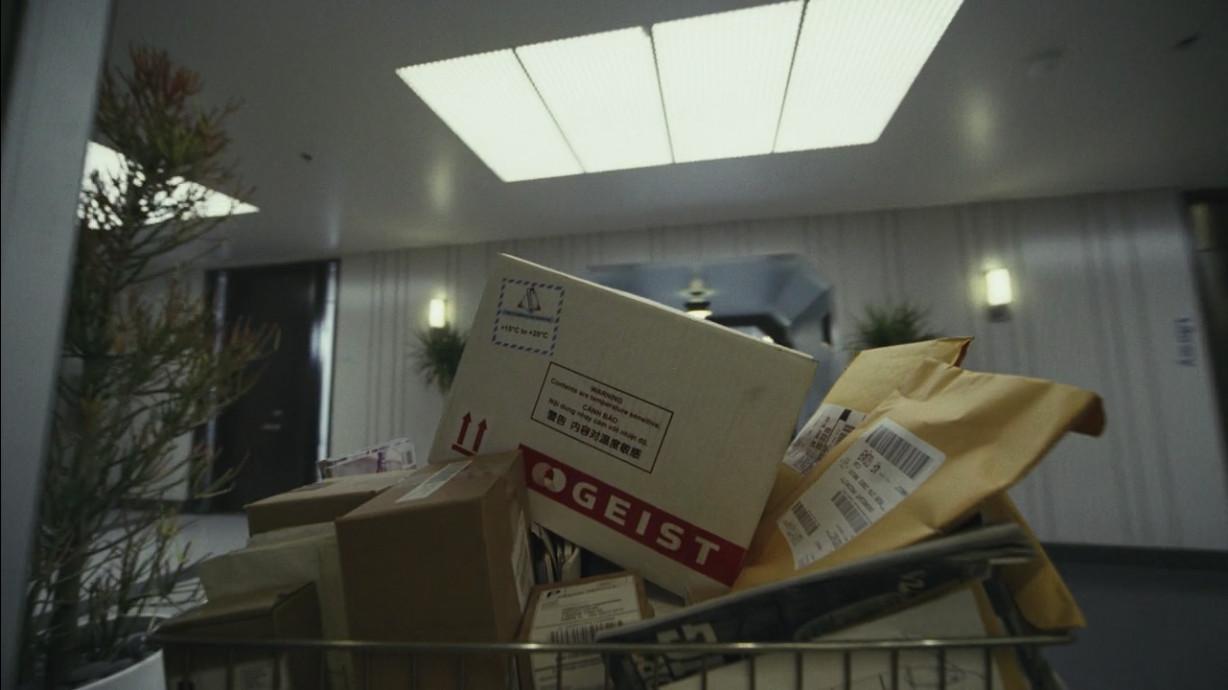
The split screen was a favored technique of 1970s filmmakers trying to generate suspense without cross-cutting. In the prom sequence of Carrie, De Palma utilized it brilliantly to delineate multiple points of action in a single location.
In Homecoming, the split screen is used primarily to make the phone conversations between Heidi and her off-site boss, Colin, more visually compelling. Not only do we get to see both sides of the dialogue at all times, but the staging plays up the contrast between the two characters. While Heidi is always shown on the job, her boss is placed in a variety of (increasingly humorous) nonprofessional environments—golfing or attending his daughter’s birthday party.
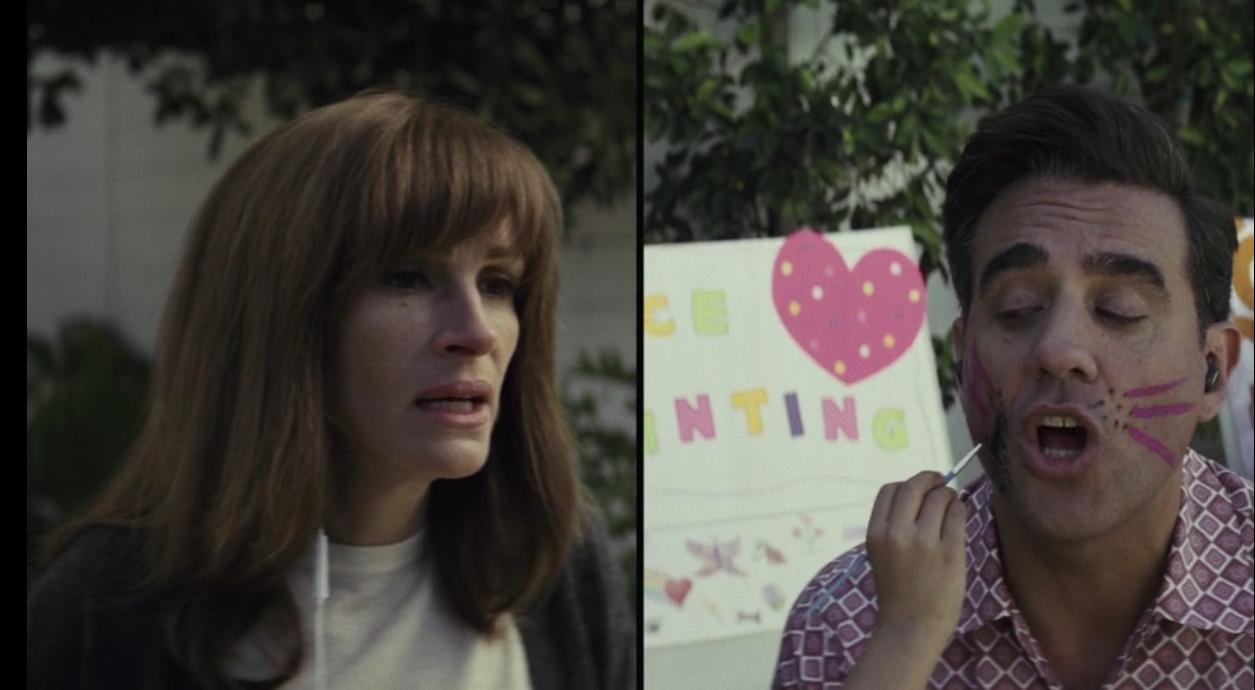
The literal and figurative distance between the characters tells us that Colin is smart enough to orchestrate his plan from the sideline while keeping Heidi in the middle of the action. It also keeps them apart in the 2018 scenes, so that when they come together in the flash-forwards, there’s novelty in seeing them within the same claustrophobic, compressed frame. In the last frame below, Colin hangs up on Heidi, and the black space to the viewer’s left plays up her sense of abandonment and isolation—trapping her in her own narrow frame with nobody to talk to.
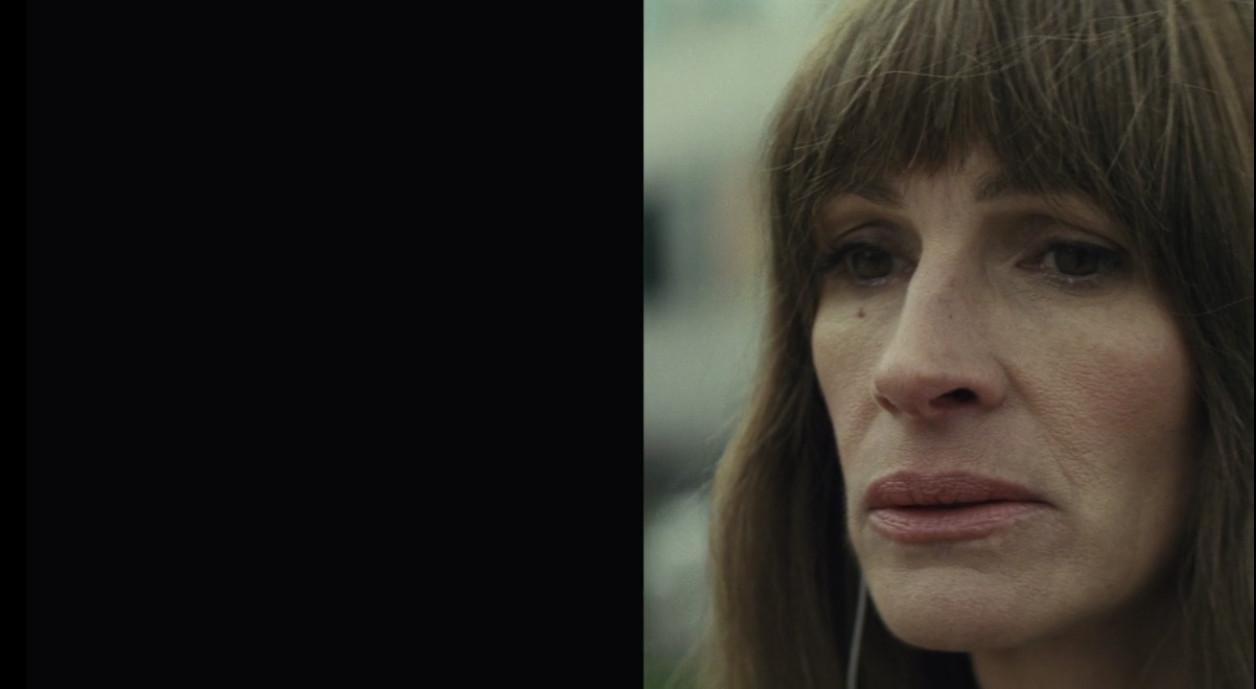
Style for its own sake is a double-edged sword. Shots that call attention to their own cleverness or beauty can just as easily be seen as a way to disguise a lack of substance. Homecoming’s most sheerly beautiful images are its top-down perspectives on spiral staircases. These images can be taken as nods to similar compositions in the films of Alfred Hitchcock (especially Vertigo, with its numerous ouroboros-like swirls).
It’s also a kind of genre trope: From Kiss Me Deadly to The Exorcist, stairs are often sites of danger and intrigue. In Homecoming, Esmail uses the staircases as reminders about the essentially hierarchical nature of the story, which features characters ascending and descending to different levels of power and understanding, sometimes switching positions in the space of a single revelation. In the first frame, Colin is shown moving up a golden staircase to indicate his upward mobility; in the second, the Department of Defense investigator Thomas Carrasco descends with purpose, visualizing his will to get to the bottom of an intractable mystery.
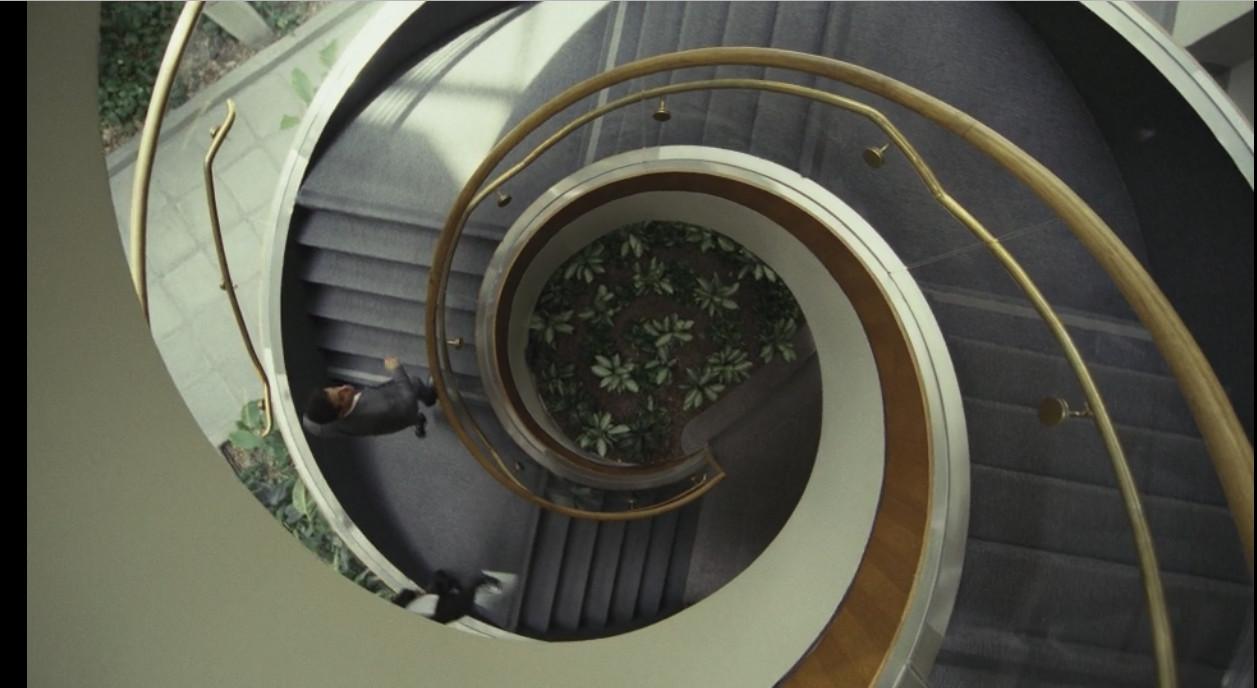
The relationship between Homecoming’s characters and their environments is often quite sophisticated, with various layers of meaning inside even simple compositions. In the first shot below, the camera goes inside the fish tank to observe Heidi and returning soldier Walter Cruz watching the fish.
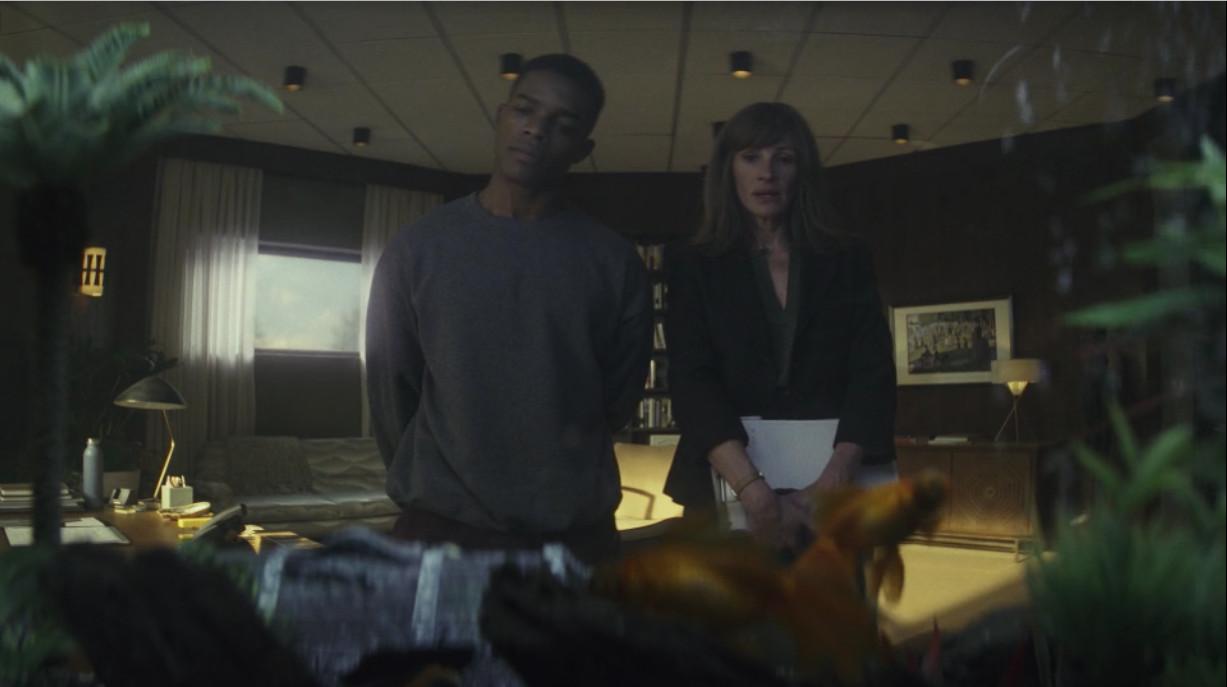
The effect is that it places them behind glass, hinting that they themselves are occupying a kind of lifelike but artificial habitat in Homecoming’s offices. The low-angle shot of Carrasco poring through the archives contains nods to the codas of both Citizen Kane and Raiders of the Lost Ark, and their cavernous storage facilities—each piled high with more boxes than any one investigator could unpack in a lifetime. But it also aligns him with a subordinate-close-to-the-ground position.

Between the boxes looming above him and the Geist pamphlet obscuring his face, he is simultaneously surrounded and dwarfed by information, pinned down within an already narrowed frame. In the third shot, a laundromat washing machine’s spinning viewfinder provides a subtly cartoonish visualization of the wheels turning in Colin’s mind, as he tries to decide how to manipulate the amnesiac Heidi. It’s a quietly hilarious image made stronger by Bobby Cannavale’s transparent acting.
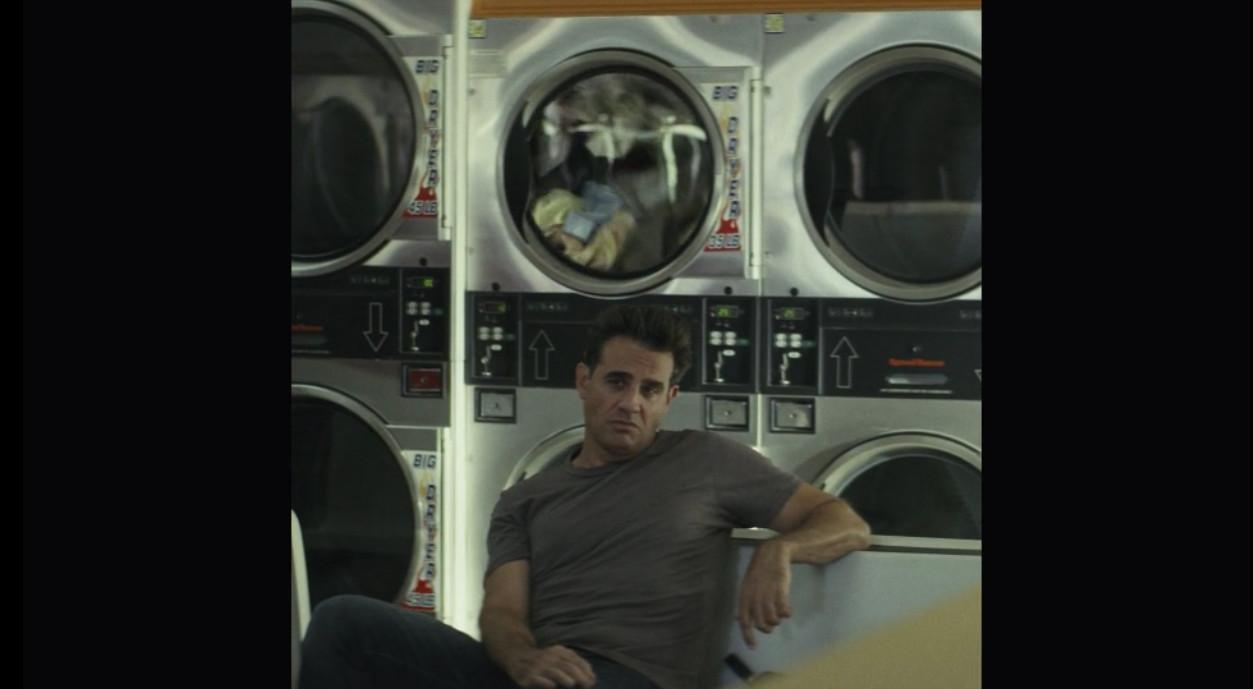
In the 2018 sequences, the widescreen frame is often used to emphasize the sheer space of certain locations, including Heidi’s office, which is designed and lit to give a sense of organized sprawl. During this session with Walter, Esmail gradually collapses the distance between Heidi and her patient by using successively intimate close-ups, not cutting directly out of the master shot but instead mediating the transition. We only gradually register the incredible shift in scale from the initial shot to the screen-filling close-up of Stephan James’s face.
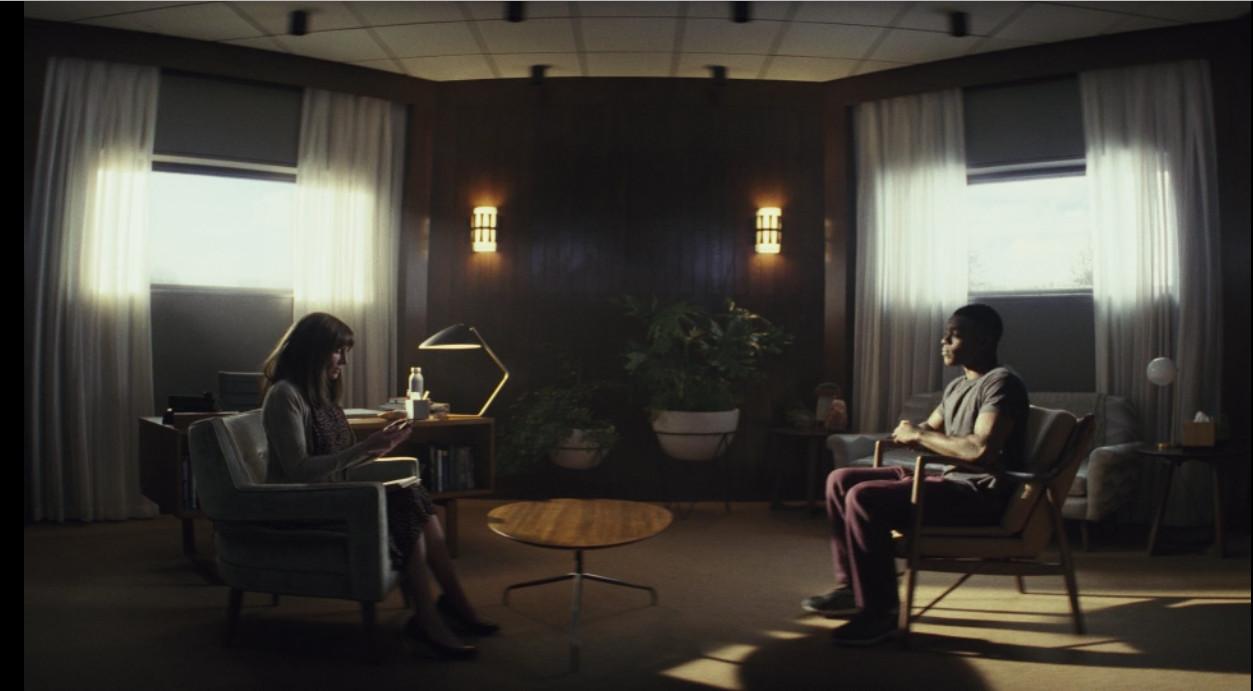
Heidi’s increasing sense of closeness to Walter—and her guilt at betraying him through her work at Homecoming—becomes encoded in the scene’s editing scheme, which uses classical yet strategically heightened film grammar to generate an emotional effect.
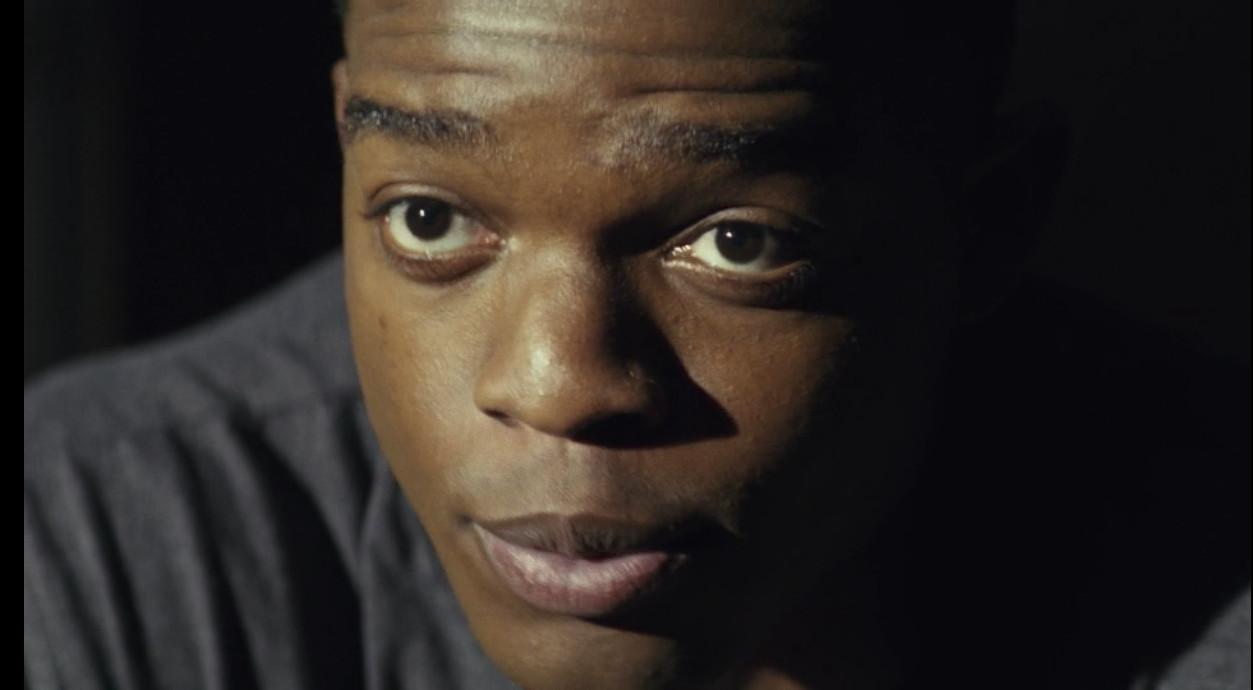
Beyond the suspense of its story line, Homecoming contains a secondary form of tension, which is tied to our wondering about when its two timelines and two aspect ratios will catch up with each other. The outcome to this mystery is arguably Homecoming’s best-executed moment.
While searching through Homecoming’s former offices, Carrasco (occupying the 1:1 aspect ratio, as always) sees Heidi through a window on the other side of the compound. She’s also in the 1:1 aspect ratio, and framed even more claustrophobically through the blinds. A few moments later, she’s triggered by a suddenly unrepressed memory, and the frame widens to take in her enlarged perspective. (The French Canadian director Xavier Dolan used a similar gimmick in his 2014 Cannes prize winner Mommy, but don’t hold this against Homecoming.) After Heidi’s moment of clarity, the 1:1 aspect ratio disappears entirely, creating more space within the widescreen frames for each of the film’s characters, including Carrasco, who is freed from his visual prison. It also allows all three of the main characters (Heidi, Carrasco, and Colin) to be shown within the same camera set-up.
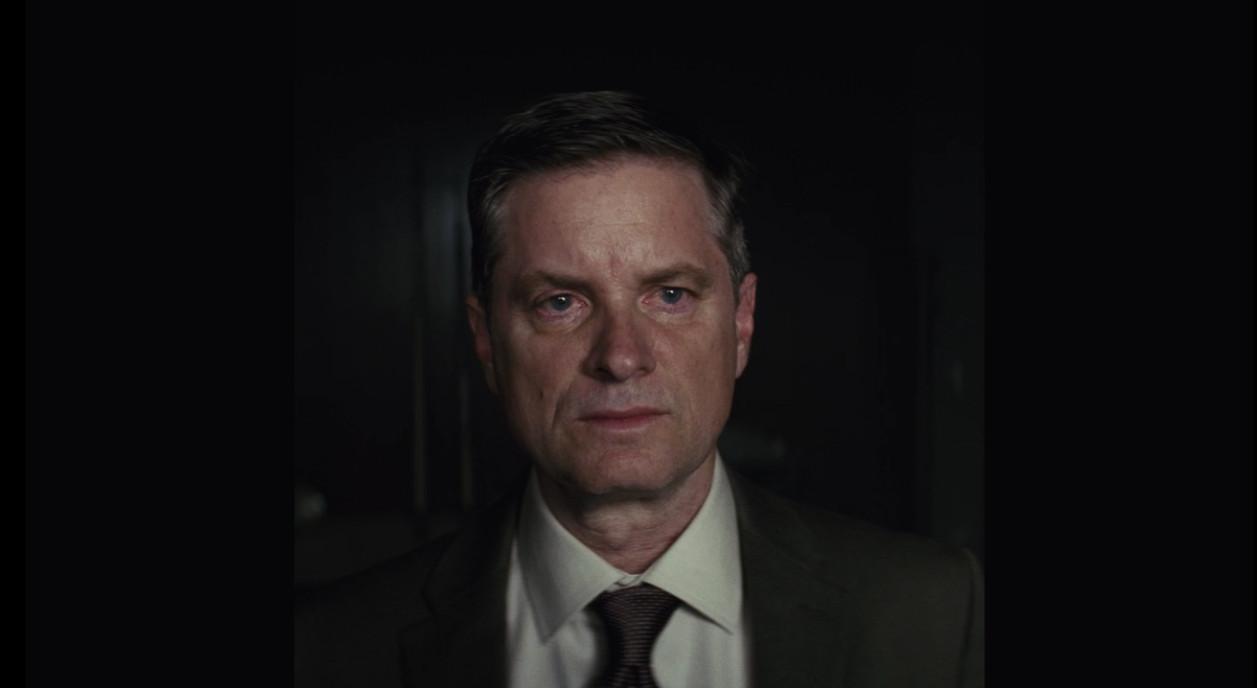
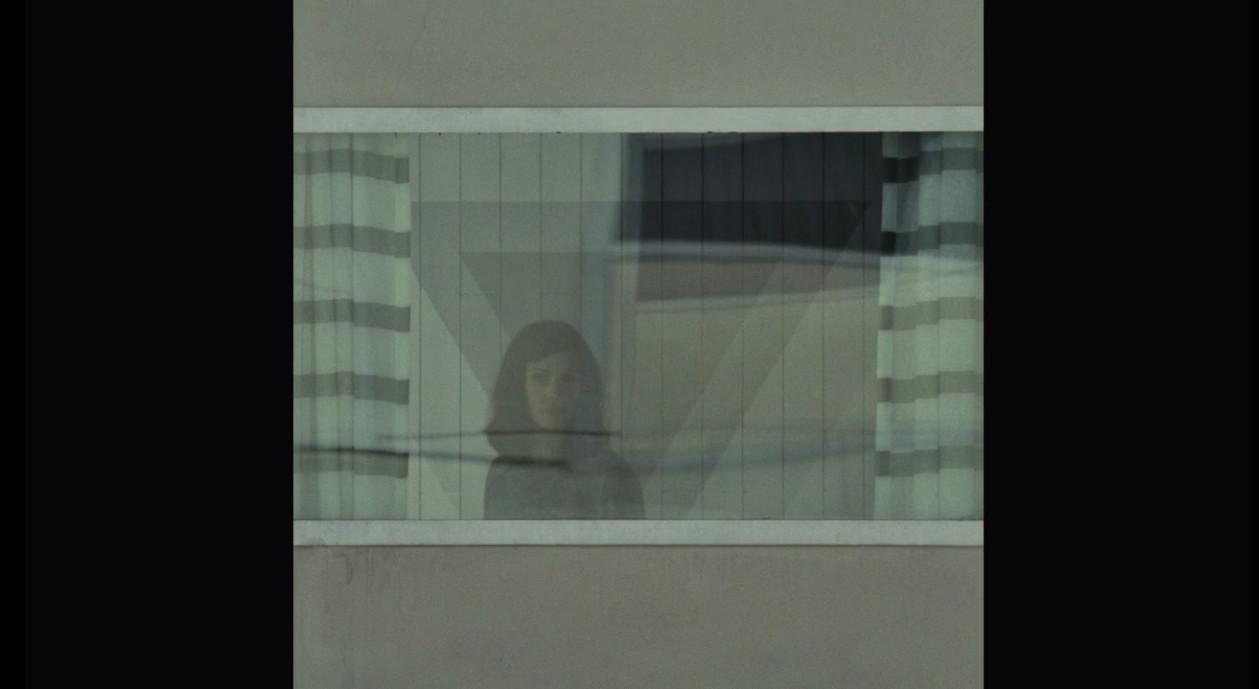
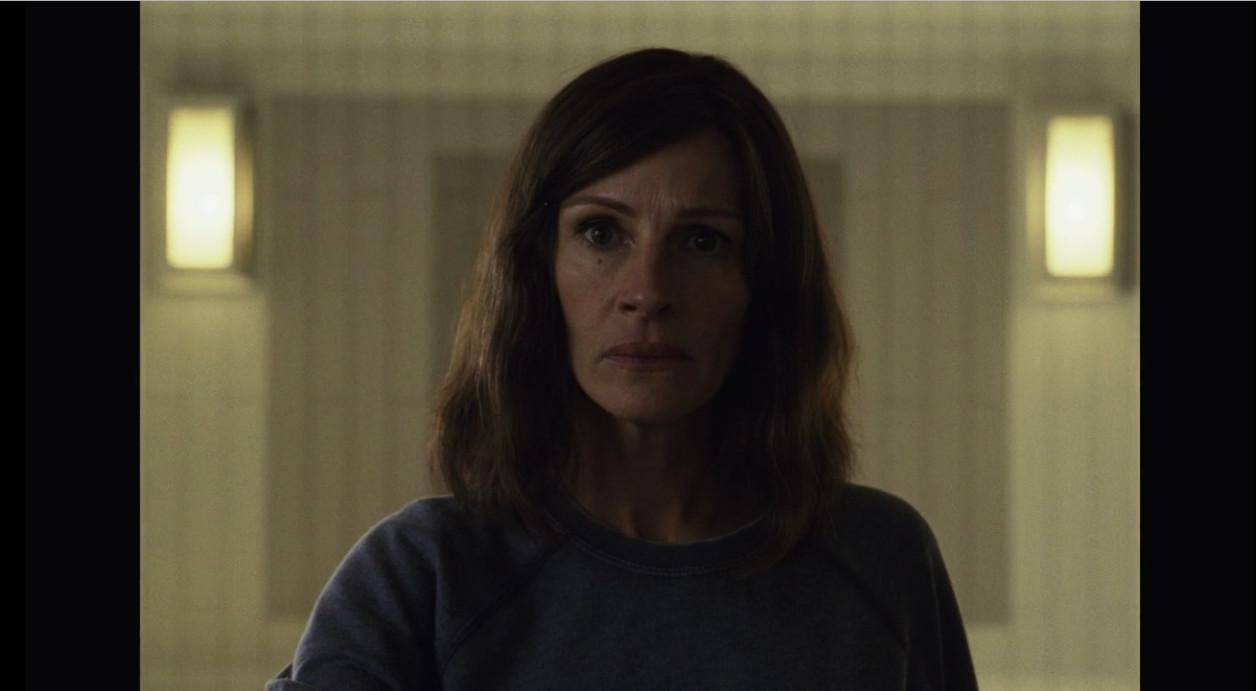
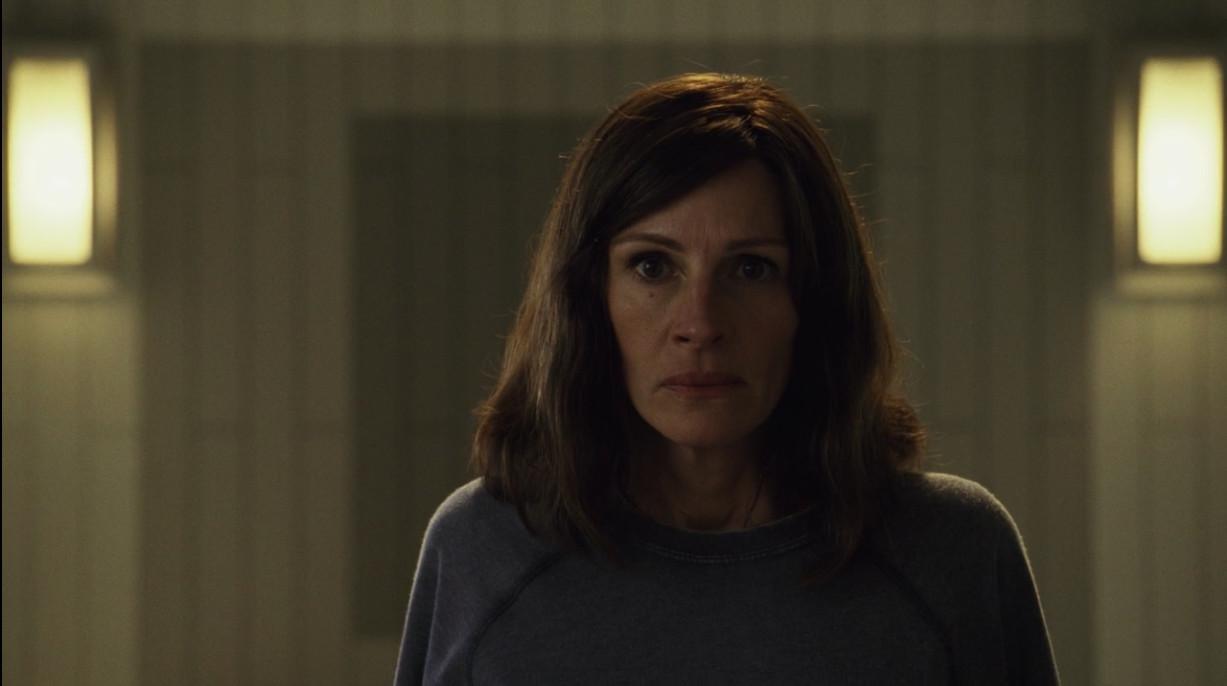
One of the most enjoyable aspects of Homecoming is its small scale; whatever the larger implications of its story in terms of memory and trauma—and however high the conspiracy will be shown to reach in Season 2—the stakes are refreshingly low and nonapocalyptic. That modesty is tied mostly endearingly to Carrasco, who is not an elite government operative but a midlevel functionary—a “cog”—whose job is to grease the bigger wheels around him.
Shea Whigham’s terse, low-key performance has its own kind of no-nonsense joy, but it’s the way Esmail films the character that makes him the soul of the show. We see him entering information in an ancient DOS format (despite the near-future setting). The phrase “Complaint Elevated” represents the early culmination of his character arc: He’s sent what he knows up the chain of command.
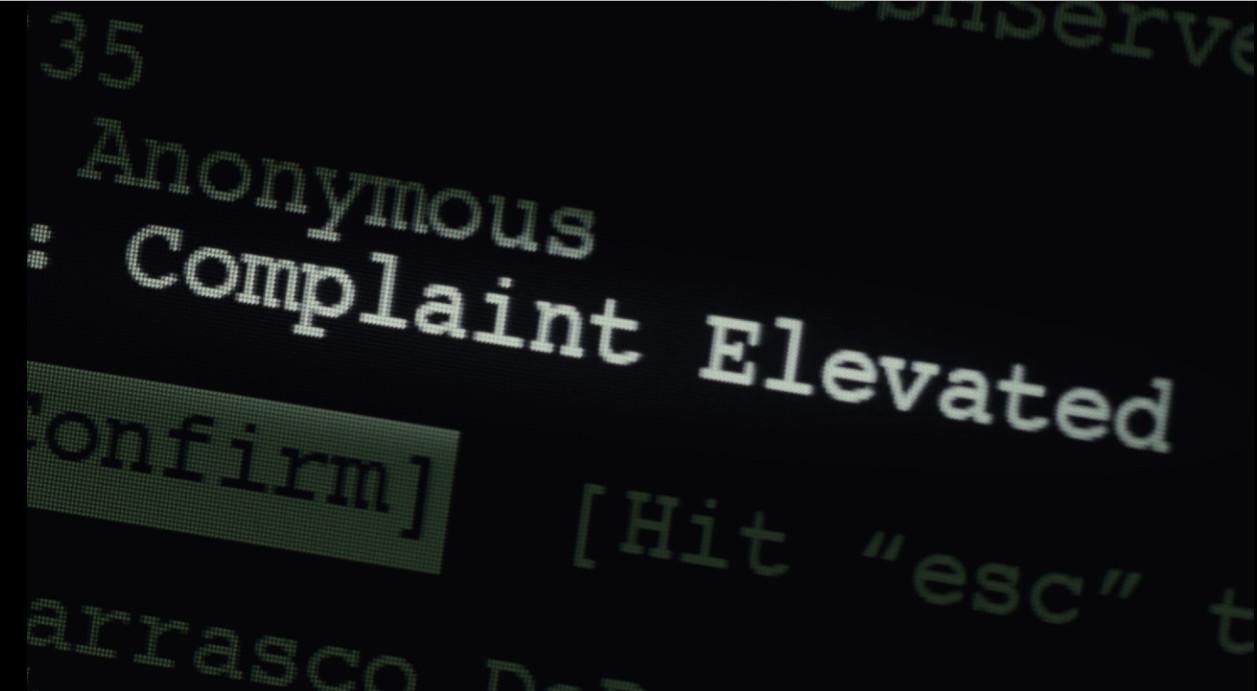
The shot of him sitting back afterward with what could be a sense of satisfaction or futility—we’re too far away to know for sure—once again quotes All the President’s Men, specifically its final image of Woodward and Bernstein typing away in the Washington Post offices.
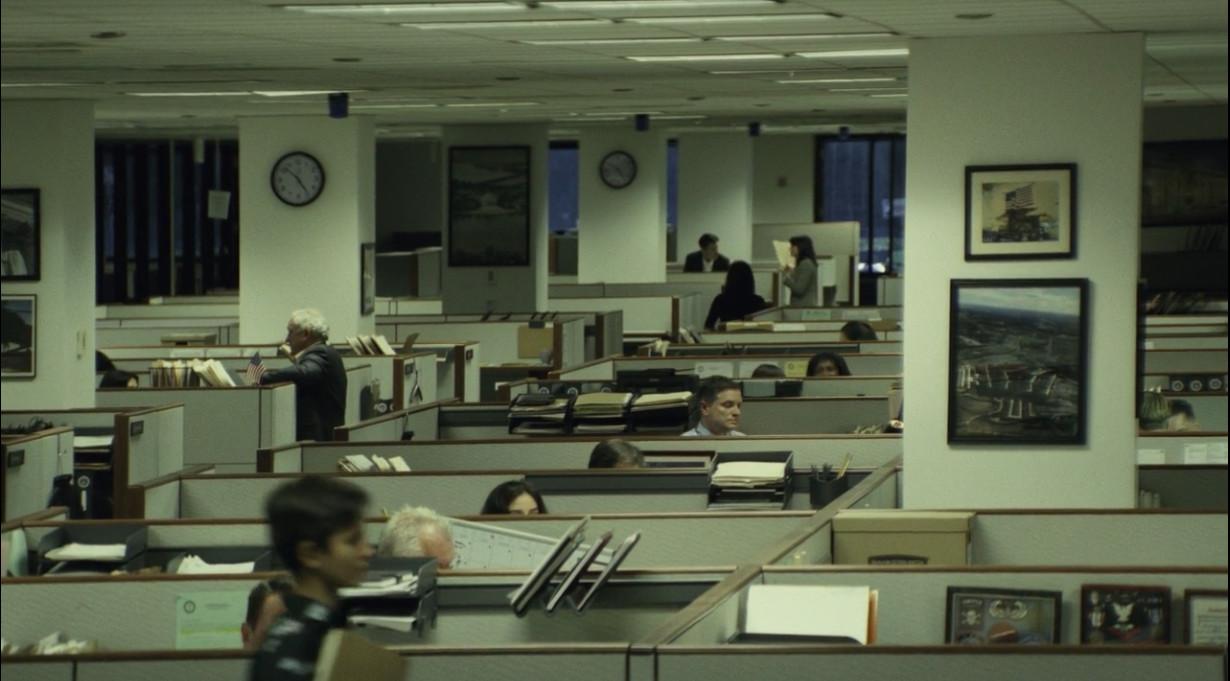
It’s too early for them—or anybody else—to appreciate the scope of their achievements, but as usual, Pakula’s camera placement fills in the bigger picture. Here, the implication is more sinister. Is Carrasco a cog in the machine, or has he been swallowed up by it?